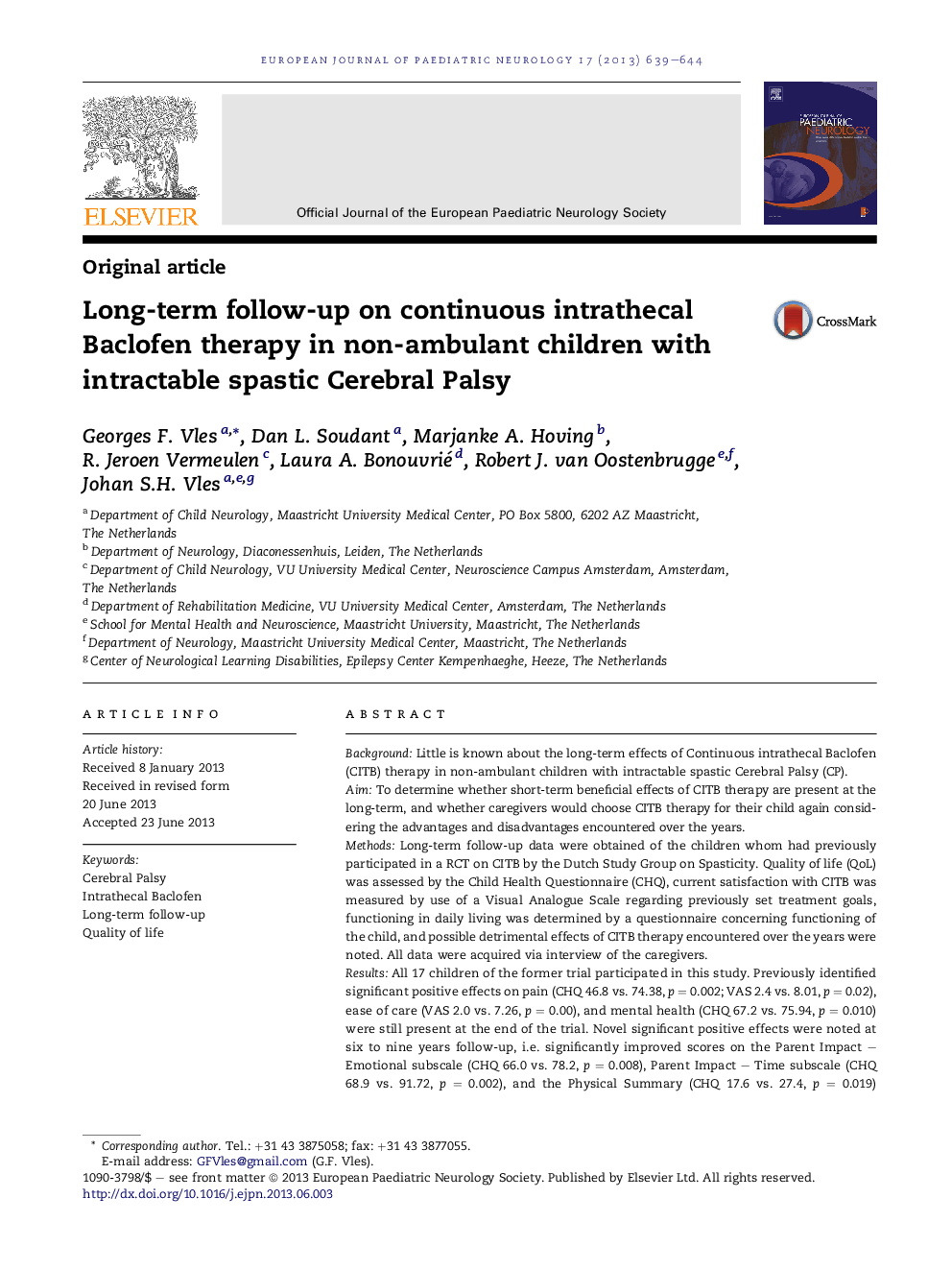| کد مقاله | کد نشریه | سال انتشار | مقاله انگلیسی | نسخه تمام متن |
|---|---|---|---|---|
| 6016686 | 1580023 | 2013 | 6 صفحه PDF | دانلود رایگان |
BackgroundLittle is known about the long-term effects of Continuous intrathecal Baclofen (CITB) therapy in non-ambulant children with intractable spastic Cerebral Palsy (CP).AimTo determine whether short-term beneficial effects of CITB therapy are present at the long-term, and whether caregivers would choose CITB therapy for their child again considering the advantages and disadvantages encountered over the years.MethodsLong-term follow-up data were obtained of the children whom had previously participated in a RCT on CITB by the Dutch Study Group on Spasticity. Quality of life (QoL) was assessed by the Child Health Questionnaire (CHQ), current satisfaction with CITB was measured by use of a Visual Analogue Scale regarding previously set treatment goals, functioning in daily living was determined by a questionnaire concerning functioning of the child, and possible detrimental effects of CITB therapy encountered over the years were noted. All data were acquired via interview of the caregivers.ResultsAll 17 children of the former trial participated in this study. Previously identified significant positive effects on pain (CHQ 46.8 vs. 74.38, p = 0.002; VAS 2.4 vs. 8.01, p = 0.02), ease of care (VAS 2.0 vs. 7.26, p = 0.00), and mental health (CHQ 67.2 vs. 75.94, p = 0.010) were still present at the end of the trial. Novel significant positive effects were noted at six to nine years follow-up, i.e. significantly improved scores on the Parent Impact - Emotional subscale (CHQ 66.0 vs. 78.2, p = 0.008), Parent Impact - Time subscale (CHQ 68.9 vs. 91.72, p = 0.002), and the Physical Summary (CHQ 17.6 vs. 27.4, p = 0.019) compared to baseline. Ninety-four percent of the caregivers would choose CITB treatment again for their child again.ConclusionThe beneficial effects of CITB are present at the long term and caregiver satisfaction is high.
Journal: European Journal of Paediatric Neurology - Volume 17, Issue 6, November 2013, Pages 639-644
